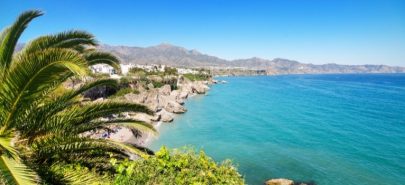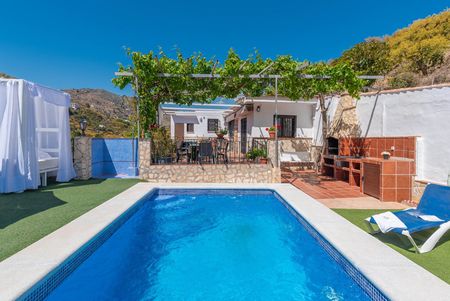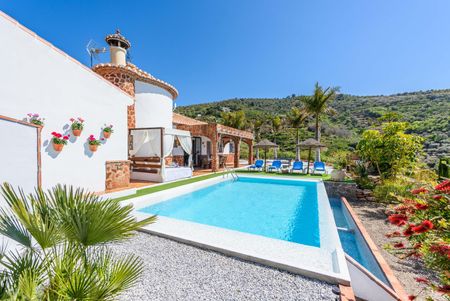If you’re looking for a getaway, Torrox is the best choice: its fairs, beaches and monuments will make you discover the authentic Andalusian culture. Go for it!
Torrox belongs to the region of the Axarquía. The mild climate conditions and the warm welcome you will receive, make this place an exceptional holiday destination, so much that the town has won the “prize” of Europe’s best climate. This is thanks to the year-round spring, whose average temperature is 18ºC.
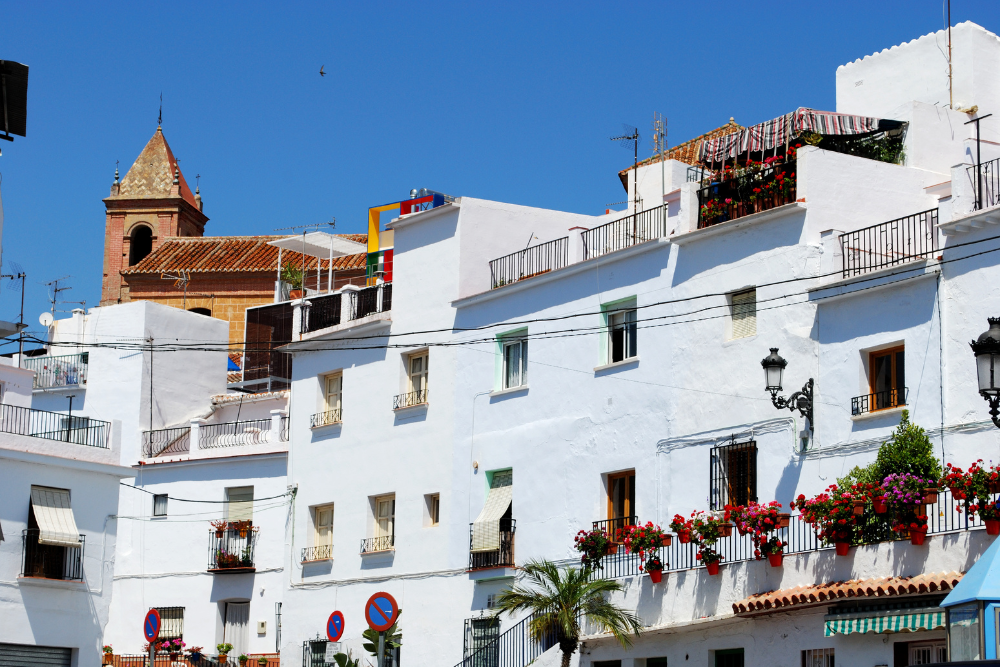
This is possible thanks to the mountains that envelop the village and its closeness to the beaches of the Costa del Sol, in the valley of river Torrox. In fact, only 4 km separate the two areas of Torrox, Torrox Pueblo and Torrox Costa. The landscape you will be able to enjoy is subtropical, as it combines the town’s seven beaches, summing a total of nine km worth of seashore, with the mountain range that prevents the strong winds from reaching Torrox.
How to get to Torrox
A 45-minute drive separates Torrox from Malaga city centre. You will only have to take the A-7 highway until the second exit of the roundabout, as you enter the A-7207. From here, get to the MA-102 road, on the third exit of the roundabout. Following the directions, you will easily reach Torrox city centre.
If, on the other hand, you’d rather go by bus, you will be happy to know that ALSA provides this service some ten times per day, from Puerto de Málaga to Torrox. The ride is approximately one hour and a half and the one-way ticket costs €4.82.
Torrox Pueblo and Torrox Costa
As mentioned before, the town is divided into two areas, separated by 4 km and well connected between each other. Torrox Pueblo is the Old Town, the oldest part of the village and where you will find the highest quantity of history and monuments.
Torrox Costa, on the other hand, features more touristic areas, beaches and seashores that let you enjoy the famous climate of Torrox. Torrox Costa is also divided into smaller areas, among which El Morche stands out. Here is where the fishermen used to live and, nowadays, it has become a very fascinating tourist attraction.
How to get to Torrox Costa from Torrox Pueblo
Two bus lines, provided by Nieto company, offer daily transfers from Torrox Pueblo to Torrox Costa. Line 1 (Torrox-Torrox Costa-El Morche) leaves at 8.15 am (7.30 during weekdays), and the last ride leaves at 8.30 pm.
Line 2 (Torrox-Torrox Costa-El Morche-Torrox Park-Torrox Costa-Torrox) offers three rides (9 am, 10 am, 2 pm). Take a look at this page
(¿Cómo desplazarse? > Autobús Urbano) to check the hours of the buses that connect the two areas of Torrox.
Short history of Torrox
The word Torrox comes from Arab, and it means “tower”. However, several studies have proved that the first inhabitants of this place in the province of Malaga were the Phoenicians, and the Romans, who develop the commercial and fishing industry (famous is the garum sauce) in the area. Later on, Torrox was occupied by the Arabs, when it became the silk collecting centre, which then used to be sent to Malaga and Granada. Torrox was conquered by the Christians in 1488.
What to see and what to do in Torrox
Among the activities that you can’t miss out on in Torrox is discovering its history, as you unveil the secrets of the several monuments featured in the town.
Lighthouse of Torrox
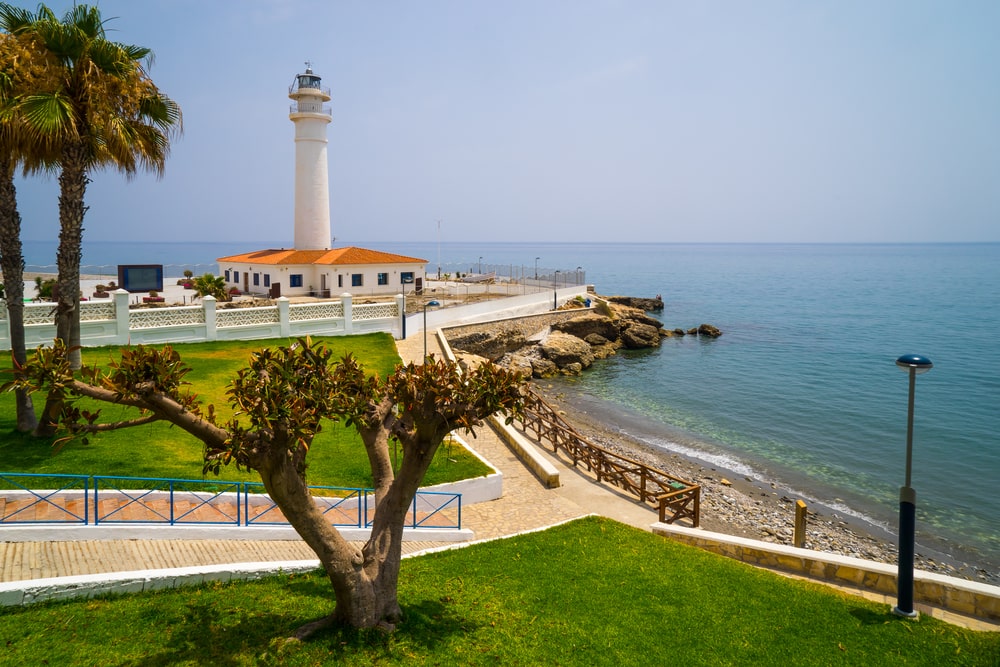
The Lighthouse of Torrox is the main attraction in town. It was built in 1864, and it’s one of the only ones in the province of Malaga that are open to the public. The lighthouse welcomes exhibitions that show the history of Torrox, also thanks to the Roman archaeological site that’s located in the Lighthouse enclosure. Inside the lighthouse, there is the Museo Marino de Torrox (Marine Museum of Torrox).
Defensive system of Torrox
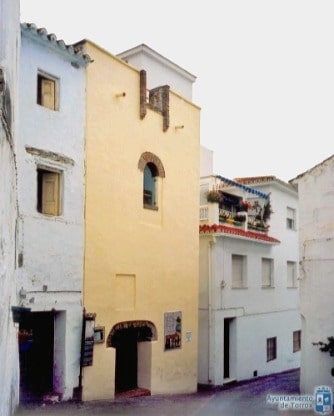
Photo courtesy of Ayuntamiento de Torrox
The 15th-century Almenara de Huit and Torre Vigía de Calaceite are also part of the heritage in Torrox. Both buildings had to defend Torrox from the attacks from the coast. Likewise, Torrox also relied on an Arab fortress, whose rests you can still see nowadays, especially those of a defensive wall (El Portón and El Torreón).
Iglesia de Nuestra Señora de la Encarnación
Torrox’s main church was built in the 16th century on the remains of a Moorish mosque; the church was then enlarged in the 17th century. Its rectangular-shaped tower stands out in the outer part of the church, which is topped by a pyramidal-shaped spire.
Other churches in Torrox
Two other churches that are worth visiting are the convent and hermitage of Nuestra Señora de las Nieves and the church of San Roque. The first one was founded by the Mínimos Franciscans in the 16th century, and it features a two-storey convent with cloisters, indoor patio and stables that were used as a fruit warehouse in the 19th century and, afterwards, as Guardia Civil headquarters in the 70s.
The church of San Roque, on the other hand, is in a Neo-Mudéjar style and dates back to the 16th century. It has a single nave and, in the outdoor space, it features a bright-red brick.
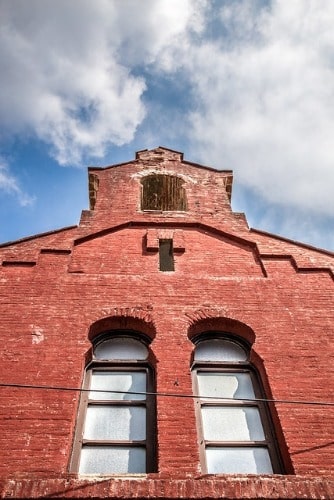
Photo courtesy of Javier Sánchez
Casa de la Hoya
The 19th century was the century of the greatest architectonic importance. For example, the Casa de la Hoya (also known as Palacio de la Joya), which accommodated king Alphonso XII during his visit to the region in 1884, to pay a visit to the areas damaged by the December earthquake.
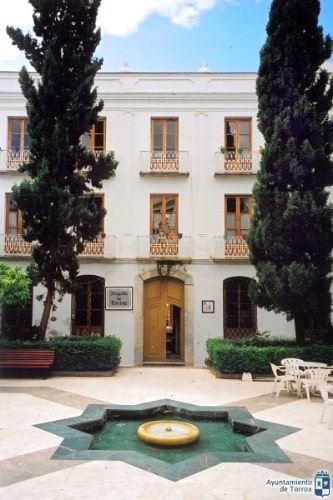
Photo courtesy of Ayuntamiento de Torrox
The Jardín de la Casa (the gardens) deserves a special mention, as it was designed by the same gardener that ideated the gardens of Malaga’s Paseo del Parque. The garden features a French-style part and another in the Mediterranean and tropical garden, in addition to a vegetable patch. Nowadays, the building welcomes the Casa de la Cultura.
Casa de la Moneda and the Museo de las Miniaturas
The Casa de la Moneda, which is also known as Palacio de la Aduana (Customs Building), dates back to the 18th century. It reminds of Torrox’s commercial peak, and it’s named after the mint that used to take place here in the 16th century.
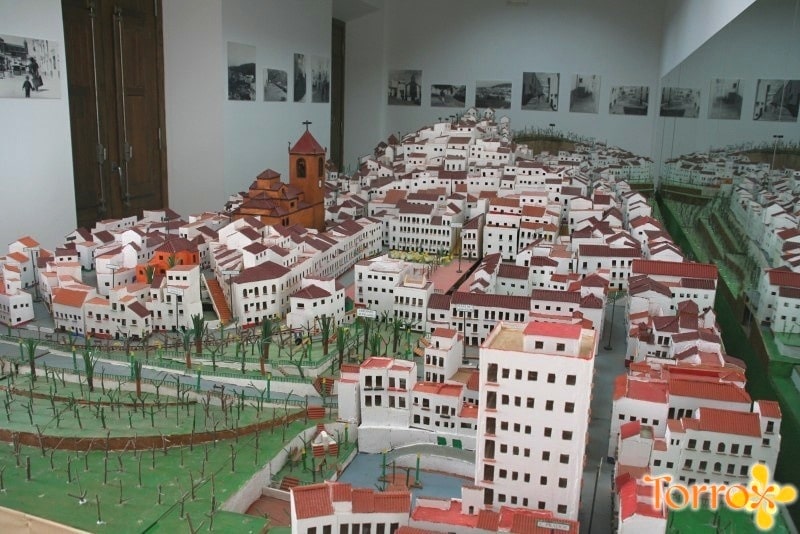
Inside, it welcomes the Museum of the Miniatures, with pieces of local craftsman Antonio Median and an awesome mockup of the town, as it appeared in the 50s.
Other historic buildings in Torrox
The 19th-century aqueduct of la Granja perfectly shows the architecture of those times, as does the facade of the 16th-century hospital of San José.
Plaza de la Constitución
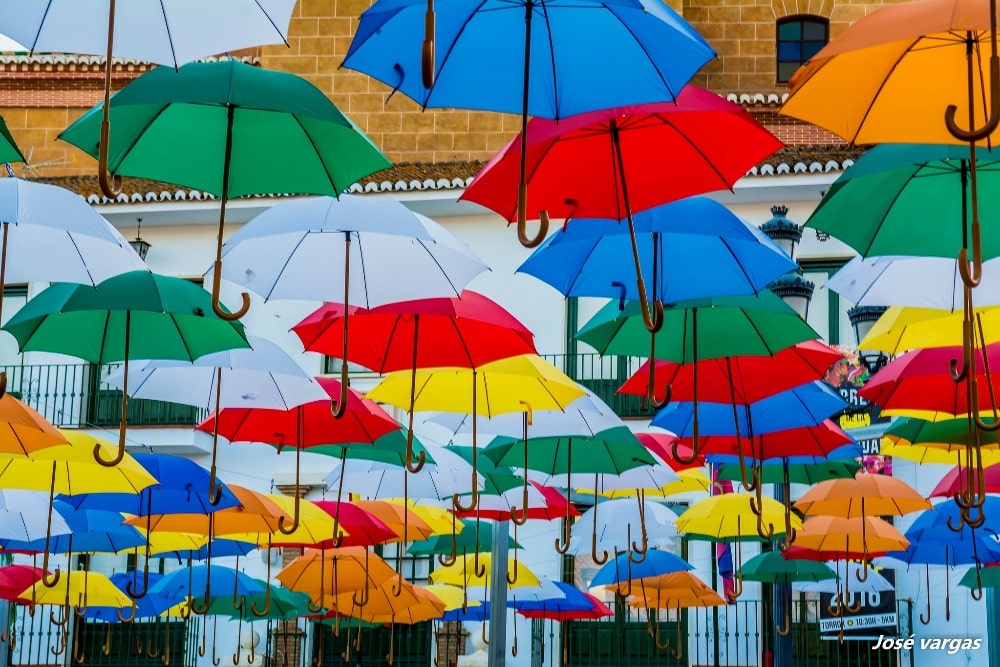
And, of course, if you travel to Torrox in summer, you must stop by the central Plaza de la Constitución. It welcomes buildings such as the Casa de la Joya, the Town Hall and the Church of Nuestra Señora de la Encarnación, the Fuente de los Chorros and the statue of El Miguero. However, its most appealing feature are the 600 colourful umbrellas with which the square gets decorated in summer, whose goal is to add splendid touches of colour to the place and provide shadow to beat the heat. Make the most of this show to take a picture in one of the most fascinating spots in Torrox.
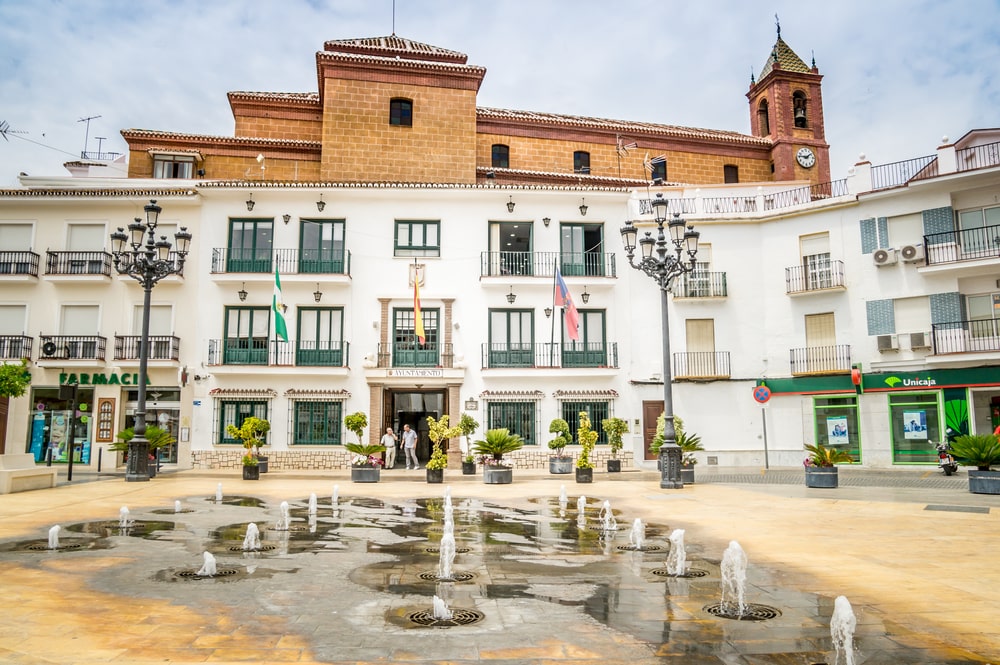
Beaches of Torrox
The coast of Torrox is part of the famous Costa del Sol. Among its most famous beaches, some are awarded yearly the Blue Flag, which is a synonym of cleanliness and purity of its waters and sand. The beaches of Torrox feature the beach of El Morche, in the urban area of Torrox Costa, provided with a promenade and provided with all services, and the 1.200-mt-long beach of Ferrara, which has access adapted for people with reduced mobility. The latter also features a smaller cove in its East part (Playa Chica) and it’s characterised by a familiar ambience.
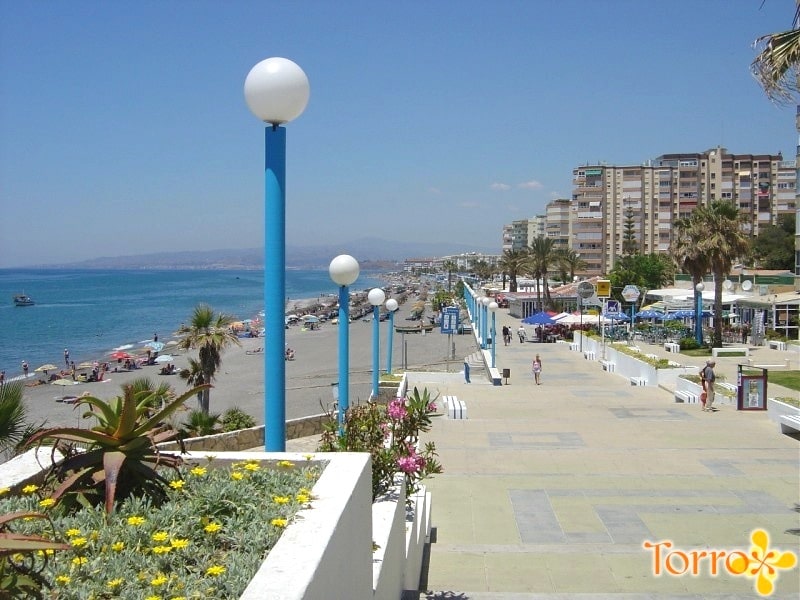
Other beaches in Torrox are the beach of Las Dunas, el Peñoncillo (near the N-340 road), the beach of Sillón, with a few services and low attendance, the beach of Calaceite, which, despite being near the N-340 road, is adapted for people with reduced mobility. Lastly, there is the beach of Vílchez, with a chiringuito, and the 60-mt-long beach of Cala Chica.
Your holiday home in Torrox
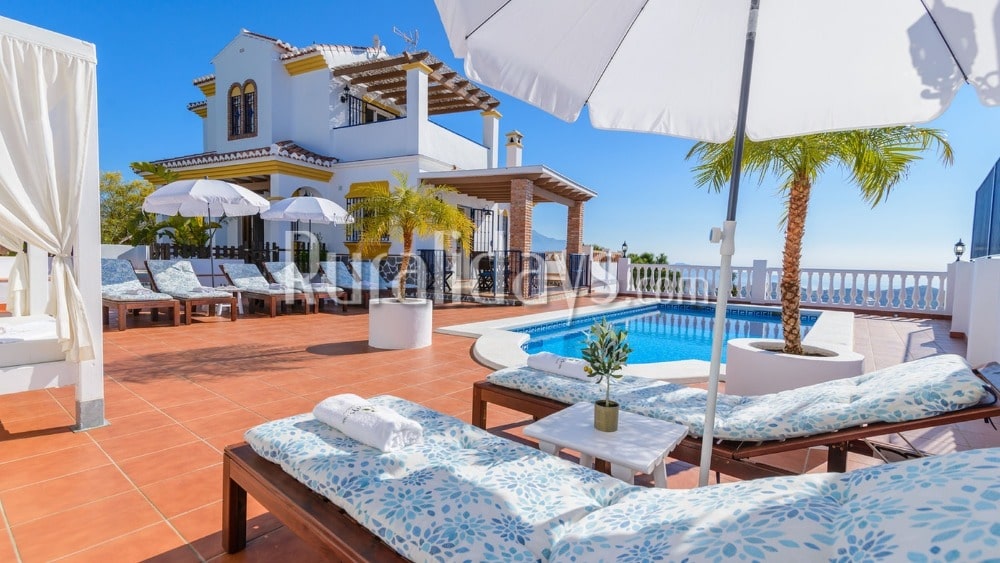
From the late 80s, the hills around Torrox have been populated by holiday homes to welcome Spanish and foreign visitors. This way, you can make the most of a dream stay in Torrox Pueblo and Torrox Costa, as you rejoice in the comforts and some breathtaking views. Take a look at the best holiday homes in Torrox and don’t miss out on the chance of enjoying a getaway to the Costa del Sol.


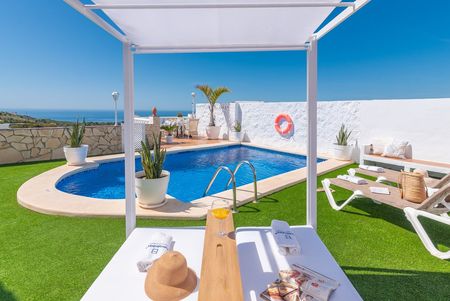
Festivals and events in Torrox
Several festivals and cultural events liven up Torrox year round, which you can’t miss out on if you want to enjoy the Andalusian culture first hand.
Carnival
When: late February
Torrox’s Carnival starts in the square of La Marina, in El Morche, and it’s characterised by competitions of bands of street musicians and costumes. At the same time, the passacaglia music is celebrated along the town’s streets.
Semana Santa
When: in 2024, from March 24th to 31th
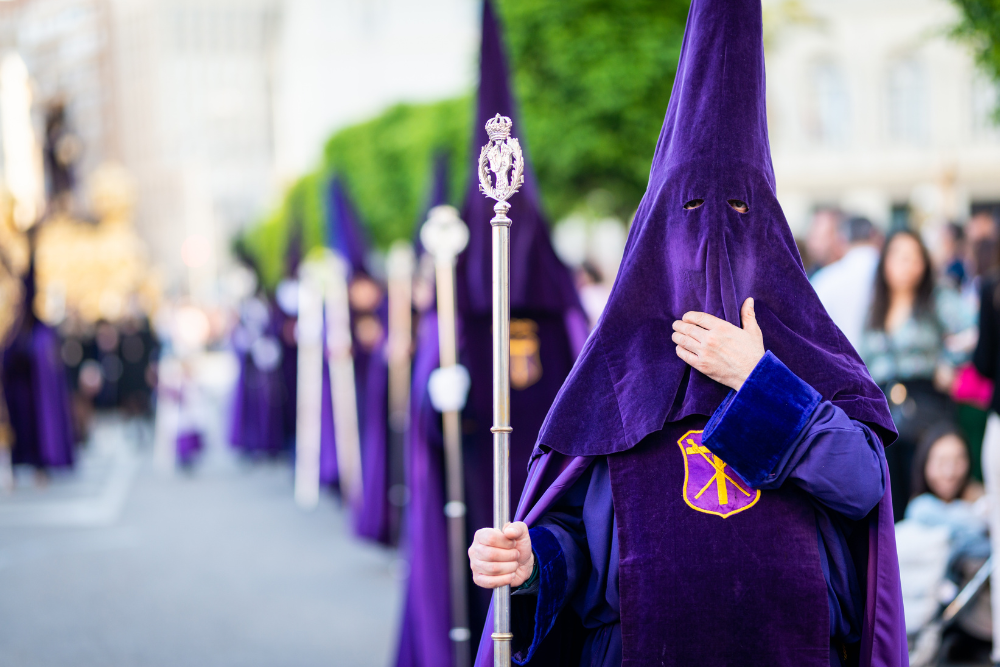
The Holy Week’s processions take place in Torrox on Good Thursday, Good Friday and Easter Sunday. It’s on the latter that the Resucitado (the Resurrected) is being taken along the streets of Torrox, decorated by fruits and vegetables of the harvest.
Cruces de Mayo
When: May 3rd
The Cruces de Mayo in Torrox is characterised by flowerpots and not simple flowers, as happens in the rest of Andalucia. The flowerpots are located on split-level altars, together with small items, and the walls are decorated with garlands and shawls. The altars are arranged in the patios and, around them, celebrations with roscos (a sweet typical of Torrox) and arropía candies take place.
Romería de San Antonio
When: in 2023, June 16th and 18th
The religious pilgrimage of San Antonio is a three-day celebration that honours the patron Saint of the Nuestra Señora de las Nieves district. The neighbourhood is livened up by music and wine of the region. Several associations and collectives take part in the organisation of the pilgrimage.
San Juan
When: June 23rd
Like the rest of Andalucia, Torrox too welcomes the celebrations of San Juan, with the classic burning of the júas, the jumping of the bonfire and a series of rituals where water plays a fundamental role. Among the traditions, you will find eating in the countryside or on the beach, and wet one’s head in any fountain, at the same time as asking for three wishes.
Virgen de las Nieves and San Roque
When: August 5th
The Día de la Patrona (Patron Saint’s Day) is celebrated in August with a plan filled with family-friendly activities that meet everyone’s desire. The peak of the celebration is the procession of Virgen de las Nieves and San Roque (Patron Saints of the town) from the hermitage of Nuestra Señora de las Nieves to the Church of Nuestra Señora de la Encarnación. The images of the saints are kept in the church for two months; the last day of the Feria de Torrox (in October), they are brought back to the Hermitage. The procession is accompanied by regional dances and fireworks.
Romería Virgen del Carmen and August Fair
When: August 15th
The Virgen del Carmen is celebrated on August 15th in Torrox, in the area of El Morche, where a maritime procession takes place. It coincides with the 4-day Fair of El Morche, characterised by fishing contests and music shows.
Fiesta del Turista
When: in September
Torrox pays tribute to its visitors, both Spanish and foreigners, during one day in September. The celebrations take place on the beach of Ferrara and feature tastings of migas, ensaladilla arriera, espetos de sardinas and drinks. Children playgrounds are also available for the little ones.
October Fair
When: in 2024, from October 2nd to 6th
The Feria de Octubre, which takes place during the first weekend of October in honour of San Roque and the Virgen de las Nieves, is when the Patron Saints are brought back to the hermitage where they are kept for the rest of the year. The Fair is celebrated in October, rather than in August (when is the effective Patron Saints’ Day) due to the grape harvest that took place in August and September.
During four days, the fairground welcomes stands that let you taste typical products and enjoy music shows, starting with the passacaglia music by the pupils of the Academia Municipal de Música. At night, the streetlights get turned on. The Day Fair is celebrated in the Plaza de la Consitución and the most moving moment of the Fair, which also puts an end to the celebrations, is the procession that takes the Saint Patrons back to the Hermitage, from the Church.
Día de las Migas
When: in 2023, December 17th
The Fiesta de las Migas, which was declared of National Touristic Interest, pays tribute to the most typical dishes of Torrox, on the last Sunday before Christmas. The migas are the perfect dish for fieldworkers, as they are made with toasted breadcrumbs, minced meat and vegetables. Everyone that wishes to have a taste of the migas, can do so during this day; the dish is also accompanied by a glass of wine and an “arriera” salad, and it’s served near the Mercadillo de la Almazara.

The celebrations follow in the Plaza de la Constitución, with dances and music and, despite Sunday being the main day, Torrox welcomes several playful activities and cultural acts in the previous weeks.
Cuisine in Torrox
As we have mentioned until now, Torrox’s most typical dish, and the most popular, is the migas, which are usually accompanied by an arriera salad (made with cod fish, olives, chives, oranges and olive oil), papas a lo pobre (potatoes with onion, pepper, olive oil), gazpacho (tomato soup), ajoblanco soup and espetos de sardinas. On Christmas, the potaje de Nochebuena (the Christmas Eve’s soup) is fairly common, while during the rest of the year, you can taste the sopa de maimones and the guiso de calabaza (pumpkin stew).
Dessert-wise, you will find the arropía, a candy made of boiled honey. The hornazo is typical of San Juan, and the roscos fill the shops during Christmas time.
Lastly, the homemade wines of Muscatel grapes, the tropical fruits and olive oil complete the typical dishes of the cuisine of Torrox.
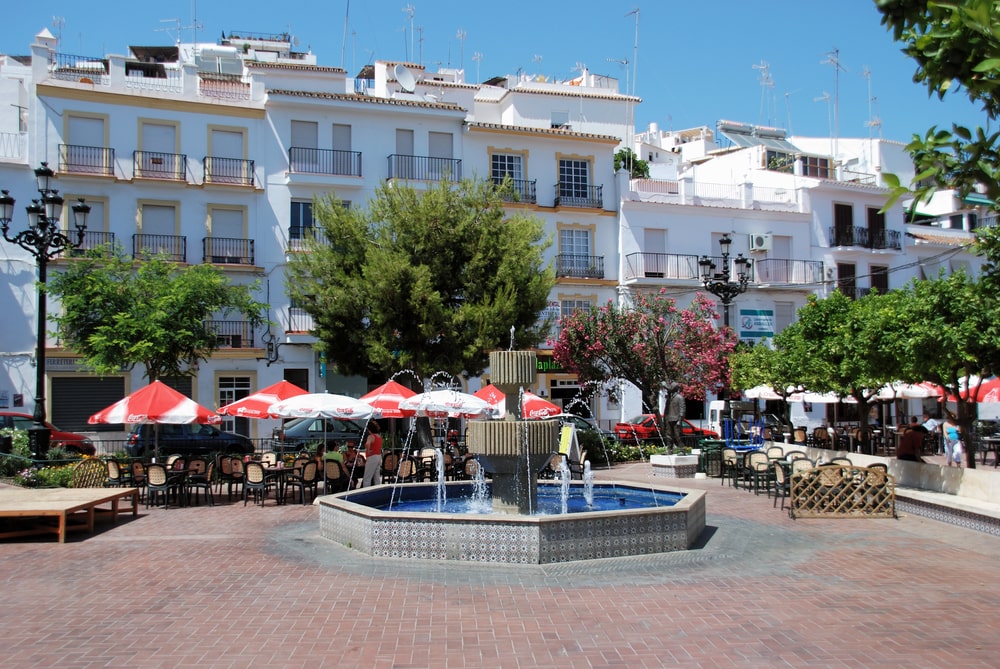
Interesting data about Torrox
- Surface: 50 km2
- Inhabitants: 16,465 (2018)
- Demonym: torroxeño
- Location: Torrox is located south of the region of La Axarquía, at the foot of the Sierras de Tejeda y Almijara. It borders with Nerja, and it’s 20 km from Vélez-Málaga and 40 from the capital city.
- Average temperature: 18ºC
- Average rainfalls: 530 l/m2
- Webpage: http://www.torrox.es/
Tourist Office in Torrox
Torrox features four tourist offices, which you can check at this link. The main tourist office is the following

Address: Avenida de Cómpeta
Telephone: (+34) 952 53 02 25
Email: [email protected]
Opening hours: from Monday to Friday, 8 am – 2.30 pm; Saturday, 9 am – 1 pm
If you are asking yourself what to do and what to see in Torrox, discover firsthand what we have been telling you, as you fall in love with the Roman, Arab and Spanish culture.

 (7)
(7)
